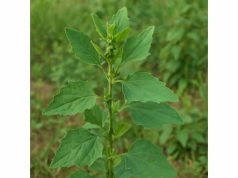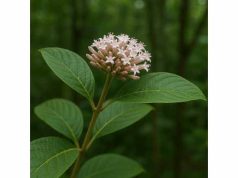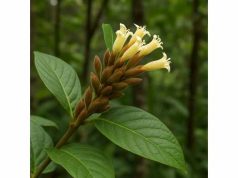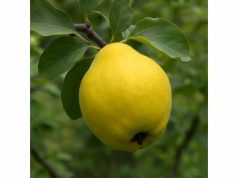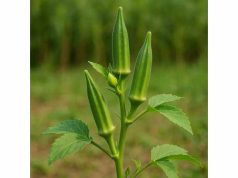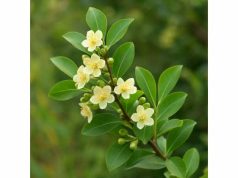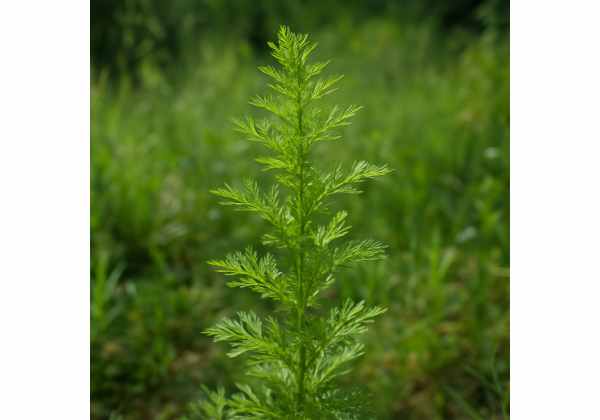
Qing hao is a revered traditional Chinese herb celebrated for its diverse health benefits and potent medicinal properties. With a rich history in herbal medicine, this herb is renowned for its anti-malarial activity, immune-modulating effects, and anti-inflammatory properties. Its active compounds work synergistically to combat infections, regulate body functions, and potentially reduce the risk of chronic diseases. Widely used in both clinical and traditional settings, Qing hao offers a natural alternative for those seeking improved overall wellness, with a legacy that spans centuries of empirical use and modern scientific validation.
Table of Contents
- In-Depth Botanical Insights and Identification Techniques
- Phytochemical Spectrum and Principal Active Agents
- Health Advantages and Core Therapeutic Qualities
- Practical Applications, Preparations, and Safety Considerations
- Research Insights and Pivotal Scientific Discoveries
- Frequently Asked Questions and Answers
In-Depth Botanical Insights and Identification Techniques
Qing hao, scientifically known as Artemisia annua, belongs to the Asteraceae family and has been cherished in traditional Chinese medicine for centuries. Native to regions of Asia, particularly China, this herb grows in temperate climates and thrives in well-drained, fertile soils. Its delicate, feathery green leaves and small, yellowish flower clusters not only contribute to its visual appeal but also signal its unique adaptability and resilience. Traditional cultivation methods emphasize organic practices to preserve its potent bioactive compounds. The plant’s morphology—characterized by its slender stems, aromatic leaves, and intricate branching—is integral for botanists and herbal practitioners alike, as these traits are key to proper identification and harvesting.
The leaves and flowers of Qing hao emit a faint, earthy aroma that intensifies upon drying. Such characteristics are critical when differentiating it from other Artemisia species. Detailed examination of the leaf shape reveals pinnately compound leaves with numerous narrow segments, while its inflorescences consist of small capitula arranged in loose clusters, each contributing modest amounts of nectar and essential oils. Notably, the herb’s growth cycle and seasonal variations impart subtle changes in the concentration of its medicinal compounds. For instance, the flowering stage is often linked to higher levels of artemisinin—the compound widely known for its anti-malarial efficacy.
Cultivation practices have evolved to ensure that environmental stressors, such as drought or excessive humidity, are minimized to maintain the herb’s chemical stability. Farmers often employ methods such as intercropping and organic fertilization to create ideal conditions for growth. Traditional texts emphasize the significance of timing and geographical location when harvesting Qing hao. Roots, leaves, and even the flowering parts are evaluated meticulously to determine the optimum harvest period, ensuring peak potency and therapeutic efficacy. In many rural communities, these ancient practices remain unchanged, underscoring the herb’s cultural and medicinal legacy.
Botanical classification places Qing hao within a diverse genus that exhibits a wide range of secondary metabolites. These compounds, including essential oils, flavonoids, and sesquiterpene lactones, have been documented to play roles in the plant’s defense mechanisms against pests and diseases. The metabolic processes of Artemisia annua are also influenced by environmental factors such as light, temperature, and soil composition. Research in phytochemistry has elucidated pathways in which these compounds are synthesized, underscoring the complexity and multifaceted nature of the herb. In-depth analysis using microscopy and chromatography further assist in standardizing quality control during both cultivation and post-harvest processing.
Herbalists and scientists alike note that the herb’s adaptability is reflected in its varied morphology across different regions. In some areas, the plant exhibits broader leaves with a stronger fragrance, while in others, the leaves are more delicate and the aroma subtler. Such variation is crucial for tailoring cultivation techniques and optimizing the extraction of its valuable compounds. Moreover, the genetic diversity found in different strains of Qing hao has opened research avenues for breeding programs aimed at enhancing the concentrations of its active ingredients. This has significant implications for both therapeutic applications and commercial production.
The integration of traditional cultivation methods with modern agricultural practices has bolstered efforts to produce high-quality Qing hao. Techniques such as greenhouse cultivation, controlled irrigation, and organic pest control have contributed to increased yield and chemical consistency. This balance between tradition and modernity not only preserves the herb’s therapeutic integrity but also meets the stringent requirements of contemporary herbal supplement industries. Enthusiasts and researchers continue to explore the genetic markers that define optimal growth characteristics, thereby ensuring that every harvest delivers a product that meets both historical and scientific standards.
Beyond its agricultural significance, Qing hao stands as a symbol of nature’s capacity for healing. Its storied use in combating malaria and other ailments is a testament to the harmonious balance between biological diversity and human ingenuity. Detailed botanical studies offer insights into how this herb has adapted over millennia, leading to its status as a cornerstone in the herbal pharmacopeia. By understanding these botanical insights, practitioners can better harness its full potential for modern therapeutic applications and contribute to an enduring legacy of natural healing.
Phytochemical Spectrum and Principal Active Agents
Qing hao’s remarkable medicinal qualities are rooted in a complex blend of bioactive compounds. Through centuries of empirical use and modern extraction techniques, scientists have identified a diverse array of phytochemicals that contribute to its therapeutic effectiveness. The following list outlines the key active agents found in Qing hao, with each component playing a distinctive role in its health benefits:
- Artemisinin
Artemisinin is the signature compound isolated from Qing hao and is widely recognized for its potent anti-malarial properties. This sesquiterpene lactone has a unique endoperoxide bridge that generates reactive oxygen species lethal to malaria parasites. Beyond its antimalarial action, artemisinin and its derivatives are under investigation for their anticancer and anti-inflammatory activities. Advanced research techniques, including high-performance liquid chromatography (HPLC), have been instrumental in quantifying artemisinin levels in various cultivars, ensuring its standardized use in pharmacological preparations. - Dihydroartemisinin (DHA)
As a metabolite of artemisinin, dihydroartemisinin plays a crucial role in enhancing the bioavailability and overall efficacy of the herbal extract. It contributes not only to the anti-malarial capacity but also exhibits potential in immune modulation and tumor suppression. Research exploring the pharmacodynamics of DHA has underscored its role in disrupting cellular proliferation in malignant cells, thereby opening avenues for its use as an adjuvant in cancer therapy. - Artemisinic Acid
This precursor compound is integral to the biosynthetic pathway that leads to artemisinin production. Artemisinic acid undergoes enzymatic conversions under specific environmental conditions, and its concentration is a reliable indicator of the herb’s overall potency. Ongoing studies suggest that, aside from its role as a biochemical precursor, artemisinic acid may possess intrinsic antimicrobial properties, contributing to the herb’s ability to counteract various pathogens. - Flavonoids
Qing hao contains a robust spectrum of flavonoids, including quercetin, kaempferol, and luteolin. These polyphenolic compounds are known for their antioxidant activities, which help neutralize free radicals and reduce oxidative stress. Their anti-inflammatory and vasodilatory properties further contribute to improved cardiovascular health, and their presence in Qing hao supports a multifaceted approach to disease prevention. The synergy between flavonoids and other active agents enhances the overall therapeutic profile of the herb. - Essential Oils and Terpenoids
The volatile oils extracted from Qing hao impart a characteristic aroma and contribute to its antimicrobial and anti-inflammatory effects. These terpenoids, including camphor and cineole, have been shown to improve respiratory function and alleviate minor infections. Their role in traditional aromatherapy practices underscores the herb’s holistic approach to healing, bridging sensory and physiological benefits for enhanced wellbeing. - Coumarins
Present in minor quantities, coumarins are another class of compounds that contribute to the anti-coagulant and anti-inflammatory properties of Qing hao. They assist in reducing blood viscosity and improving circulation, thereby promoting cardiovascular health. The precise modulation of enzyme activity by these compounds is under active investigation, particularly for their potential in managing inflammatory disorders. - Polysaccharides
Along with low-molecular-weight compounds, Qing hao also comprises complex carbohydrates such as polysaccharides, which are believed to boost the immune system. These macromolecules stimulate various immune cells and enhance the body’s natural defense mechanisms, making them critical components in formulations aimed at preventing infections and supporting long-term health.
Each of these phytochemicals contributes uniquely to the herb’s overall effectiveness. When used in combination, they create a synergistic matrix that offers a holistic approach to disease prevention and health maintenance. Research continues to unravel the intricate interactions between these compounds, shedding light on how their combined effects can be optimized for therapeutic applications. Moreover, variations in environmental factors, cultivation methods, and genetic lineage significantly impact the concentration and bioavailability of these active agents, making standardized extraction techniques essential for consistent medicinal quality.
By maintaining rigorous quality standards during cultivation and extraction, modern producers are able to harness the full phytochemical spectrum of Qing hao. This ensures that every preparation contains the precise balance of compounds necessary to achieve its intended health benefits. As a result, the herb stands as a powerful natural remedy, bridging ancient wisdom with contemporary scientific validation. Its rich chemical profile not only fortifies its traditional uses but also opens new prospects for clinical applications and therapeutic innovation.
Health Advantages and Core Therapeutic Qualities
The diverse health benefits of Qing hao extend far beyond its acclaimed anti-malarial properties. This herb has been embraced in traditional medicine for its multi-targeted approach in addressing several chronic health issues. Modern scientific inquiry validates many of these benefits, underscoring the herb’s remarkable therapeutic potential.
One of the most celebrated properties of Qing hao is its potent anti-malarial action, primarily derived from artemisinin. However, recent research has broadened our understanding of its capabilities by demonstrating its anti-inflammatory, antioxidant, and even anticancer effects. The herb supports the immune system by modulating inflammatory pathways, which may help reduce the severity of conditions such as arthritis, autoimmune disorders, and other inflammatory diseases. For instance, its capacity to inhibit pro-inflammatory cytokines makes it a promising adjunct in managing chronic inflammatory conditions.
Qing hao’s antioxidant activities are equally notable. The presence of flavonoids and essential oils plays a crucial role in neutralizing harmful free radicals, thereby mitigating oxidative stress—a significant contributor to cellular aging and a variety of chronic diseases. The herb’s antioxidant properties may help protect vital organs, reduce the incidence of degenerative conditions, and support overall cardiovascular health. Its ability to improve blood circulation through the dilatation of blood vessels is another aspect that enhances its reputation as a cardioprotective agent.
In addition to combating inflammation and oxidative stress, Qing hao has been associated with anti-tumor activities. Preliminary studies suggest that its bioactive compounds can interfere with the signaling pathways that promote cancer cell proliferation. This makes it a subject of intense research in oncology, where scientists are exploring its application as a complementary therapy alongside conventional treatments. The herb’s potential to induce apoptosis—programmed cell death—in cancer cells further bolsters its candidacy for integrated cancer management protocols.
Moreover, Qing hao has been linked with improved metabolic functions. Its use may aid in balancing blood sugar levels and enhancing lipid metabolism, which could be beneficial for individuals at risk of type 2 diabetes or metabolic syndrome. These metabolic benefits are attributed to the herb’s multi-faceted approach to regulating enzymatic activities, thereby contributing to improved overall metabolic homeostasis.
Additional health advantages include its role as an immune booster. The immunomodulatory effects of the herb, partly ascribed to its polysaccharide content, contribute to the stimulation of both innate and adaptive immune responses. This supports the body’s natural defense mechanisms and aids in reducing the risk of infections and chronic illnesses. In a world where maintaining a robust immune system is more critical than ever, Qing hao offers a natural, time-tested option for bolstering immune health.
Furthermore, users of Qing hao have reported general improvements in energy levels, mental clarity, and mood stabilization. These benefits may arise from a complex interplay between improved blood circulation, reduced oxidative stress, and enhanced metabolic activity. The herb, therefore, not only targets specific ailments but also contributes to a state of overall well-being, fostering a better quality of life.
The holistic benefits of Qing hao illustrate the herb’s versatility as both a therapeutic agent and a preventive measure. Whether used as a standalone remedy or integrated into complex herbal formulations, its multifaceted properties support a broad spectrum of health applications. These attributes have allowed Qing hao to secure its position as a mainstay in traditional herbal medicine, while also gaining recognition in modern research settings.
Practical Applications, Preparations, and Safety Considerations
Qing hao has a long-standing history of use in both traditional medicine and modern herbal supplements. Its applications range from treating acute infections to serving as a tonic for overall health maintenance. This section provides a detailed guide on how to incorporate Qing hao into your wellness routine, along with important precautions to ensure safe usage.
Applications and Preparation Methods
- Herbal Teas and Decoctions:
Qing hao is commonly used in the form of teas and decoctions. To prepare a tea, steep a measured amount of dried Qing hao leaves in boiling water for 10–15 minutes. This method efficiently extracts the bioactive compounds, making the tea a soothing remedy for symptoms of fever and inflammation. - Tinctures and Extracts:
Tinctures are prepared by soaking the herb in alcohol or glycerin. This extraction method yields a concentrated solution that can be taken in small doses to support immune function and alleviate respiratory issues. These liquid formulations allow for easy dosage adjustments and rapid absorption into the bloodstream. - Capsules and Powders:
For those seeking convenience, Qing hao is available in capsule or powder form. Capsules offer controlled dosages, while the powdered form can be added to smoothies or yogurts. It is important to follow the manufacturer’s recommendations to ensure consistency and avoid overdosing. - Topical Applications:
Some formulations incorporate Qing hao extracts into creams and ointments for their anti-inflammatory and antimicrobial properties. These are particularly useful for treating skin irritations and minor wounds. The soothing nature of the extracts can help reduce redness and promote healing. - Combination Formulas:
In traditional Chinese medicine, Qing hao is often combined with other herbs to enhance its therapeutic effects. For example, it may be paired with ginger or ginseng to create synergistic formulas that provide balanced energy, improved circulation, and enhanced detoxification.
Dosage and Administration Guidelines
Determining the appropriate dosage of Qing hao depends on several factors including age, overall health, and the condition being addressed. While traditional practices offer general guidelines, modern applications often rely on standardized extracts to ensure precise dosing. For an average adult, a typical daily dosage might range from 200 to 500 mg of a concentrated extract. However, these dosages can vary considerably, and it is recommended to consult with a knowledgeable herbalist or healthcare provider before integrating Qing hao into your regimen.
Safety, Contraindications, and Side Effects
Although Qing hao is generally considered safe when used appropriately, certain precautions must be observed:
- Potential Allergies:
Individuals with sensitivities to plants in the Asteraceae family may experience allergic reactions. It is advisable to test a small dose initially if you have a history of plant allergies. - Drug Interactions:
Due to its potent bioactive compounds, Qing hao may interact with conventional medications, particularly those used to treat malaria, cancer, or autoimmune disorders. Always consult a healthcare provider if you are on long-term medication regimens. - Pregnancy and Lactation:
The use of Qing hao during pregnancy or breastfeeding is not well-documented and should be approached with caution. It is best to avoid use or seek professional guidance during these sensitive periods. - Overdosage Concerns:
While rare, excessive consumption of Qing hao may lead to gastrointestinal disturbances, dizziness, or headaches. It is critical to adhere to recommended dosages and monitor your body’s response, especially when initiating treatment.
Preparation Tips for Maximum Efficacy
- Quality Selection:
The therapeutic effectiveness of Qing hao largely depends on the quality of the herb. Source products from reputable suppliers who perform rigorous quality control and standardization. Organic cultivation practices enhance the purity and potency of the herb by minimizing chemical residues. - Proper Storage:
To preserve its active compounds, store Qing hao in a cool, dry place away from direct sunlight. Sealed containers help prevent oxidation and degradation of the bioactive molecules. - Integration with Diet:
For optimal results, consider pairing Qing hao with a balanced diet rich in antioxidants and essential nutrients. This synergy can amplify the herb’s health benefits, promoting a comprehensive approach to wellness that leverages both herbal remedies and nutritional support.
By adhering to these practical tips and safety guidelines, users can maximize the health benefits of Qing hao while minimizing potential risks. Whether you are seeking to harness its long-established anti-malarial properties or exploring its broader applications as an adaptogenic and anti-inflammatory agent, a mindful approach to dosage and preparation is key to a successful therapeutic outcome.
Research Insights and Pivotal Scientific Discoveries
Over the decades, numerous scientific studies have delved into the properties and clinical applications of Qing hao, shedding light on its efficacy and potential as a modern therapeutic agent. Below is a collection of significant studies that have contributed to our current understanding of this remarkable herb:
- Study on Antimalarial Efficacy (2001):
A landmark study published in the Journal of Ethnopharmacology explored the antimalarial properties of artemisinin isolated from Qing hao. Researchers demonstrated that the compound rapidly reduced parasitemia levels in malaria-infected subjects, paving the way for the development of artemisinin-based combination therapies (ACTs). - Investigation of Anticancer Properties (2007):
Research conducted by a collaborative team of oncologists and pharmacologists was published in Cancer Research. This study highlighted how artemisinin derivatives, including dihydroartemisinin, induced apoptosis in cancer cell lines, suggesting that these compounds may serve as effective adjuncts in cancer treatment protocols. - Anti-inflammatory Mechanisms (2010):
A study featured in the Journal of Inflammation examined the molecular pathways affected by Qing hao’s flavonoids and essential oils. The findings indicated that these compounds significantly suppressed pro-inflammatory cytokines, elucidating the herb’s potential in managing chronic inflammatory diseases and autoimmune conditions. - Metabolic and Cardiovascular Benefits (2015):
Published in the International Journal of Molecular Sciences, this research investigated the impact of Qing hao on metabolic parameters. Results demonstrated improvements in lipid profiles and blood glucose regulation, providing evidence for its potential role in managing metabolic syndrome and cardiovascular disorders. - Immune Modulation and Safety Profile (2018):
A recent clinical trial published in Phytotherapy Research assessed the immunomodulatory effects of standardized Qing hao extracts. The study confirmed its ability to enhance both innate and adaptive immunity while maintaining a strong safety profile, underlining its suitability for long-term therapeutic use.
These studies collectively reinforce Qing hao’s status as a multifaceted herb with applications that extend well beyond traditional use. The research findings not only support its clinical application for malaria but also provide promising insights into its potential as an anti-inflammatory, anticancer, and metabolic health agent. Continued research is expected to explore new dimensions of its therapeutic potential and refine the dosage and formulation strategies for optimal clinical outcomes.
Frequently Asked Questions and Answers
What is Qing hao primarily used for?
Qing hao is best known for its anti-malarial properties, largely due to the presence of artemisinin. However, it is also used for its anti-inflammatory, immune-enhancing, and potential anticancer benefits, making it a versatile herb in both traditional and modern medicine.
How can I safely incorporate Qing hao into my wellness routine?
Always start with small doses and follow recommended guidelines or professional advice. Qing hao is available in teas, tinctures, or capsules, and it’s important to buy high-quality products while monitoring your body’s response for any side effects.
Are there any known side effects or contraindications?
Some individuals may experience gastrointestinal discomfort or allergic reactions, especially if allergic to plants in the Asteraceae family. Always consult your healthcare provider, particularly if you are pregnant, breastfeeding, or on long-term medications, to avoid any potential drug interactions.
Can Qing hao be used alongside conventional medications?
Qing hao may interact with certain medications. It is vital to consult a healthcare professional before combining it with pharmaceutical treatments, particularly for conditions like malaria, cancer, or autoimmune disorders, to ensure safe and effective use.
How long does it take to see the benefits of Qing hao?
The timeframe varies based on the condition being treated and the formulation used. While some may observe improvements within a few weeks, others might require longer periods of consistent use. Monitoring progress and consulting a professional can help tailor the usage plan.
Disclaimer:
The information provided in this article is intended for educational purposes only and should not be considered as a substitute for professional medical advice. Always consult with a qualified healthcare provider before making any changes to your health regimen.
Please share this article on Facebook, X (formerly Twitter), or your favorite platform, and follow us on social networks for more insightful updates and health tips.

